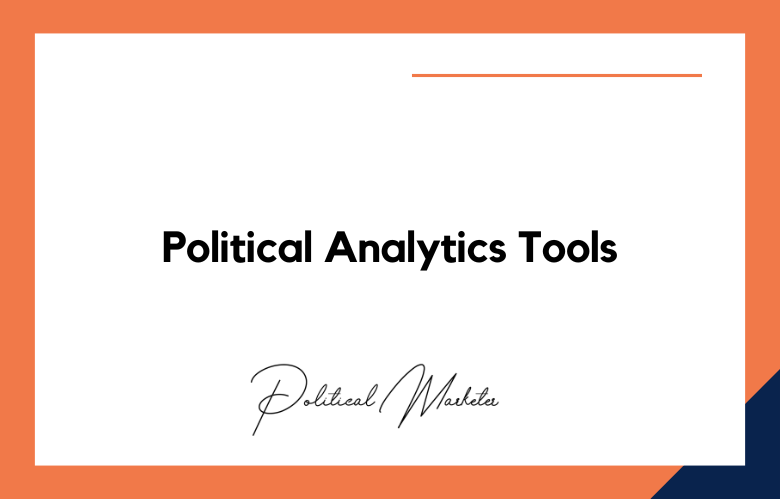Political campaigns relied on instinct, charisma, and broad messaging to connect with voters. Party leaders and candidates often depended on personal networks, community outreach, and anecdotal feedback to understand voter sentiment. While these approaches worked in smaller or less competitive environments, they lacked precision and often failed to capture the diverse concerns of large, complex electorates. In today’s political landscape, however, relying solely on intuition is no longer enough.
The rise of analytics has transformed campaigns from guesswork-driven exercises into data-powered strategies. In the United States, the 2008 and 2012 Obama campaigns set a new standard by deploying advanced voter databases, predictive modeling, and microtargeting to engage voters with tailored messages. Similarly, in India, the integration of digital surveys, booth-level analytics, and social media listening has reshaped elections since 2014. Campaigns began to rely on constituency-level data, voter profiling, and AI-driven insights to design more targeted and personalized outreach efforts. These shifts marked a clear departure from mass broadcasting to precision-driven engagement.
Ignoring data today is not simply a missed opportunity. It is a direct disadvantage. Demographics, issues, and digital behaviors increasingly segment voters. Campaigns that fail to harness analytics risk wasting budgets on ineffective ads, misjudging public opinion, and losing touch with ground realities. On the other hand, those who embrace political analytics tools gain the ability to forecast voter behavior, identify swing constituencies, and optimize resources for maximum impact. In competitive democracies, analytics is no longer an optional add-on; it is a necessity. It has become the backbone of modern election strategy.
Core Categories of Political Analytics Tools
Political campaigns rely on a wide range of analytics tools to understand voters, craft effective messages, and allocate resources efficiently. Together, these categories form the foundation of data-driven campaigning, allowing parties and candidates to move from broad assumptions to precise, evidence-based strategies.
Voter Databases & Microtargeting Platforms
Voter databases serve as the backbone of modern campaign analytics by consolidating electoral rolls, demographic details, and behavioral insights into actionable profiles. These platforms enable campaigns to segment voters by age, caste, religion, income, or issue preferences, allowing for highly targeted outreach. Microtargeting tools then use this data to deliver customized messages at the booth, ward, or even household level. Globally, platforms like NationBuilder and i360 set benchmarks, while in India, booth-level voter list digitization and constituency-specific apps have become central to election strategy. By utilizing voter databases effectively, campaigns can identify key swing groups, allocate resources efficiently, and refine message delivery for maximum impact.
Role of Electoral Rolls, Demographic Overlays, and Psychographic Data
Voter databases form the core of modern political analytics by combining multiple data sources into a structured format. Electoral rolls provide the foundation, offering verified records of eligible voters at the constituency and polling booth levels. When demographic details such as age, gender, caste, religion, and income are added, campaigns can identify patterns of political behavior. Psychographic data, which captures interests, values, and lifestyle choices, adds another layer, enabling campaigns to move beyond basic demographics and understand what motivates voters on a deeper level. Together, these datasets allow political strategists to create precise voter profiles and target specific groups with greater accuracy.
Examples: NationBuilder, i360 (US), Voter Data Systems in India
Globally, tools like NationBuilder and i360 have shown how voter data can transform campaign outreach. NationBuilder integrates voter information with email, social media, and website engagement, allowing campaigns to track interactions across channels. i360, developed in the United States, focuses on predictive analytics and voter scoring, ranking citizens on their likelihood to support, volunteer, or turn out to vote. In India, several political consulting firms and local technology providers have adapted similar models. They digitize electoral rolls at the booth level, link them with socio-economic data, and utilize constituency-specific apps to provide campaign workers with real-time access to voter information. These systems, while less standardized than their US counterparts, are rapidly shaping election strategies across Indian states.
How Voter Databases Enhance Constituency-Level Outreach
The strength of voter databases lies in their ability to make outreach both targeted and scalable. Campaigns can prioritize swing voters, identify strong supporters for mobilization, and address undecided groups with messages tailored to their concerns. At the constituency level, voter databases guide door-to-door canvassing, booth management, and social media engagement. For instance, a candidate can identify neighborhoods with low turnout in the previous election and focus resources there. By linking voter records with digital tools, field workers can log interactions, update voter preferences, and generate reports for campaign managers. This cycle of data collection and targeted action creates a feedback loop that improves message effectiveness and resource allocation.
Survey & Opinion Poll Analytics
Surveys and opinion polls remain essential tools for understanding voter sentiment and assessing the impact of campaigns. Well-designed surveys provide insights into voter priorities, issue-based preferences, and candidate approval ratings. Modern analytics enhances this process by using digital surveys, AI-driven bias detection, and real-time dashboards to interpret responses with greater accuracy. In the Indian context, agencies like CSDS Lokniti and regional polling firms combine traditional field surveys with mobile and online methods to capture diverse voter opinions. When analyzed effectively, survey data helps campaigns adjust messaging, identify emerging issues, and forecast electoral outcomes with far more precision than intuition alone.
Designing Effective Surveys for Reliable Insights
Surveys are one of the oldest and most reliable methods of capturing voter sentiment. Their effectiveness depends on careful design, including representative sampling, neutral phrasing of questions, and timing that accurately captures the political mood. Campaigns use both qualitative and quantitative approaches, combining structured questionnaires with open-ended feedback to understand what issues matter most to voters. A well-designed survey helps eliminate bias, reduces the margin of error, and provides actionable insights that guide campaign strategy.
Role of AI in Detecting Bias and False Responses
Artificial intelligence has transformed the way survey data is processed and validated. AI systems can detect patterns of inconsistency, identify outlier responses, and highlight areas where bias may distort results. Natural language processing (NLP) allows researchers to analyze open-ended answers at scale, detecting sentiment and categorizing themes without manual coding. AI can also flag suspicious or coordinated responses, which is especially valuable when surveys are conducted online, where false or manipulated inputs are more common. This ensures that campaigns rely on more accurate and trustworthy data.
Indian Context: CSDS Lokniti, Local Polling Agencies, and Digital Surveys
In India, organizations like CSDS Lokniti have established credibility in conducting large-scale surveys that reflect diverse voter behavior across regions and communities. Alongside these traditional efforts, regional polling agencies provide constituency-level insights that are particularly valuable in state and local elections. With the rapid adoption of smartphones, digital surveys using mobile apps and online forms have become increasingly common. These tools make it easier to reach younger and urban voters while reducing logistical costs. However, balancing digital surveys with on-ground fieldwork remains critical to ensure that rural and less-connected populations are also represented.
Social Listening & Sentiment Analysis Tools
Social listening tools help campaigns track what voters are saying across platforms like X, Facebook, YouTube, and WhatsApp groups. By monitoring keywords, hashtags, and mentions, campaigns can identify trending issues, detect misinformation, and measure public sentiment in real-time. In India, where multilingual discourse and regional platforms play a significant role, localized sentiment analysis is especially valuable. These tools enable campaigns to adapt messaging quickly, respond to criticism, and amplify narratives that resonate with target audiences.
Tracking Narratives on X, Facebook, YouTube, and WhatsApp Groups
Social listening enables campaigns to monitor conversations across multiple platforms where political discourse occurs. On X, hashtags and mentions often reveal trending topics and emerging narratives. Facebook and YouTube provide insights into community discussions, video reactions, and comment threads, while WhatsApp groups play a significant role in shaping grassroots-level opinions in India. By monitoring these spaces, campaigns can detect shifts in voter sentiment, identify misinformation early, and measure the reach of both positive and negative narratives.
NLP-Based Dashboards for Real-Time Mood of the Electorate
Natural language processing (NLP) powers dashboards that process large volumes of unstructured text from social media and messaging platforms. These systems categorize comments and posts as positive, negative, or neutral, providing campaigns with a real-time view of public sentiment. Beyond sentiment scoring, advanced NLP tools can categorize conversations by issue, region, or demographic group, providing deeper insights into what voters care about most. This immediacy helps campaigns adjust their messaging, test responses to speeches or policies, and track the effectiveness of counter-narratives.
Tools: Meltwater, Sprinklr, Talkwalker, and Indian Adaptations
Global tools such as Meltwater, Sprinklr, and Talkwalker are widely used to trace and analyze online conversations. They integrate multiple data streams and provide customizable dashboards for campaign teams. In India, political consultants and technology firms adapt similar tools to handle regional languages, slang, and local cultural references. These adaptations are crucial because a significant portion of online conversations takes place in vernacular languages rather than English. By combining global platforms with India-specific tools, campaigns can capture a more accurate picture of voter sentiment across diverse digital environments.
Predictive Modeling & Election Forecasting
Predictive modeling utilizes statistical methods and machine learning to forecast voter behavior, turnout, and election outcomes. By combining historical voting patterns, demographic information, survey data, and real-time social signals, these models enable campaigns to anticipate shifts in support and identify constituencies most likely to influence outcomes. Election forecasting tools also assign probabilities to scenarios, allowing strategists to plan resources with greater precision. Globally, firms like Civis Analytics and data teams in US presidential races have advanced this practice, while in India, consulting agencies are increasingly adopting constituency-level forecasting models to guide booth management, voter outreach, and last-mile mobilization.
Machine Learning Models for Turnout, Swing Voters, and Issue Salience
Predictive modeling in politics utilizes machine learning to forecast how voters will behave under various conditions. These models analyze large datasets, including past election results, demographic information, survey responses, and social media signals. They can forecast voter turnout at the booth level, identify swing voters who may shift allegiance, and highlight the issues most likely to influence decisions. By simulating multiple scenarios, campaigns can prepare strategies for both high-turnout and low-turnout elections, ensuring they remain adaptable.
Key Metrics: Voter Intention, Churn Risk, and Mobilization Probability
Effective forecasting relies on quantifiable metrics. Voter intention measures the likelihood of support for a candidate or party at a given time. Churn risk identifies voters who previously supported a candidate but are at risk of moving to another option. Mobilization probability assesses whether a supporter will actually cast a ballot. Tracking these metrics allows campaigns to distinguish between passive supporters and active voters, prioritize resources, and design outreach strategies that maximize both persuasion and turnout.
Global vs. India: Cambridge Analytica Legacy and Modern Ethical Practices
Globally, predictive analytics gained widespread recognition after firms like Cambridge Analytica claimed to use psychographic profiling to influence elections. While the controversy raised questions about data misuse and manipulation, it also highlighted the growing role of predictive tools in shaping campaign strategies. In recent years, many countries have tightened regulations to ensure the ethical use of data, and campaign firms have shifted toward more transparent methods. In India, predictive models are increasingly applied at the constituency level to forecast outcomes, guide booth management, and plan last-mile mobilization. However, these practices must strike a balance between effectiveness and compliance with the Election Commission of India’s rules on voter data and privacy.
Key Features That Make Analytics Tools Effective
The effectiveness of political analytics tools depends on how well they integrate diverse data sources and convert raw information into actionable insights. Useful tools provide granular details at the booth or constituency level, offer real-time dashboards instead of static reports, and scale easily from local to national campaigns. Security and compliance are equally important, ensuring that voter data is handled responsibly in accordance with regulatory guidelines. Campaigns that choose tools with these features gain sharper visibility into voter behavior, faster decision-making, and greater confidence in their strategies.
Data Integration Across Channels (Offline and Digital)
Practical analytics tools combine offline data such as electoral rolls and field surveys with digital signals from social media, search trends, and online engagement. This integration ensures that campaign managers view a comprehensive voter profile, rather than fragmented information. By linking offline canvassing records with digital interactions, campaigns can maintain consistency in outreach and track shifts in voter behavior across multiple platforms.
Granularity of Insights (Ward-Level, Caste/Community, Issue-Based)
Granular insights allow campaigns to identify patterns that broad statistics overlook. Ward-level data highlights local issues and voting trends, while caste and community breakdowns reveal how identity influences preferences. Issue-based analysis helps campaigns understand which topics resonate most strongly within specific groups. This level of detail ensures that messaging is both targeted and relevant, avoiding generic communication that fails to connect with voters.
Real-Time Dashboards vs. Static Reporting
Static reports provide snapshots of voter sentiment but quickly become outdated in fast-moving campaigns. Real-time dashboards, on the other hand, update continuously as new data flows in. These dashboards enable campaign teams to monitor sentiment shifts, test responses to speeches or events, and adjust strategies promptly. Access to live insights reduces guesswork and supports timely, evidence-based decision-making.
Scalability for Local Elections vs. National Campaigns
Analytics tools must adapt to the size of the campaign. A local election may require detailed booth-level management, while national campaigns demand coordination across states and constituencies. Scalable tools handle both scenarios by offering customizable features that grow with the campaign’s needs. This flexibility prevents resource waste and ensures efficiency, whether the target is a single ward or an entire country.
Security and Compliance (Privacy and Election Commission Regulations)
Handling voter data requires strict adherence to security and compliance standards. Practical tools safeguard sensitive information through encryption, access controls, and audit trails. In India, compliance with Election Commission regulations is non-negotiable, and violations can result in penalties or disqualification. Campaigns that prioritize secure and lawful use of analytics protect both their reputation and the trust of voters.
Global vs. India-Specific Tools
Political analytics tools vary significantly between global campaigns and those tailored for India. International platforms such as NationBuilder, Ecanvasser, and Civis Analytics focus on integrated voter databases, predictive modeling, and large-scale digital outreach. In India, however, tools are often adapted to handle multilingual data, booth-level voter rolls, and the dominance of platforms like WhatsApp in political communication. Local consulting firms develop constituency-specific applications that combine demographic, caste, and regional insights to inform targeted solutions. While global tools emphasize advanced technology and standardized systems, Indian tools prioritize local context, ground-level adaptability, and compliance with Election Commission regulations.
Global Landscape: NationBuilder, Ecanvasser, Quorum, Civis Analytics
Globally, several established platforms set the standard for political analytics. NationBuilder integrates voter databases with campaign outreach tools, making it easier to manage supporters and track engagement. Ecanvasser specializes in field canvassing, allowing campaigns to organize door-to-door efforts and collect real-time voter feedback. Quorum focuses on legislative and policy analytics, helping campaigns and advocacy groups understand how laws and issues influence public opinion. Civis Analytics applies advanced data science and predictive modeling to forecast voter behavior and guide resource allocation. Together, these tools highlight how technology-driven strategies shape elections worldwide.
NationBuilder
NationBuilder combines voter databases, communication tools, and campaign management features into one platform. It allows campaigns to build supporter lists, segment audiences, and send personalized messages through email, SMS, and social media. The platform also integrates fundraising and volunteer management, providing campaign teams with a central system to coordinate both digital and field operations.
Ecanvasser
Ecanvasser focuses on field outreach by helping campaigns organize door-to-door canvassing and local engagement. It equips volunteers with mobile apps to log voter interactions, track issues raised during conversations, and update voter records in real time. These features enable campaign managers to more effectively monitor grassroots activity and adjust strategies based on direct voter feedback.
Quorum
Quorum specializes in legislative and policy analytics. It maps how elected representatives, interest groups, and voters discuss and influence issues. Campaigns and advocacy groups use Quorum to track policy debates, identify influential voices, and understand the connection between political messaging and legislative outcomes. Its strength lies in linking electoral strategies with broader policy impact.
Civis Analytics
Civis Analytics applies advanced data science and machine learning to political campaigns. Its tools process survey data, demographic information, and past election results to predict voter behavior. Campaigns use Civis to model turnout, identify persuadable groups, and test the likely impact of different messages before deploying them at scale. The emphasis is on evidence-based decision-making backed by statistical modeling.
India-Specific Tools: Voter List Digitization, Booth-Level Analysis, and Local Apps
In India, political analytics tools are tailored to the country’s diverse electorate and complex voting patterns. Voter list digitization enables campaigns to organize and search electoral rolls efficiently, linking them with demographic and socio-economic details. Booth-level analysis tools break down voting behavior at the most granular level, allowing campaign managers to identify strongholds, weak zones, and swing areas. Local consultants also develop mobile applications that enable party workers to access voter data, record field interactions, and update campaign strategies in real-time. These India-specific tools emphasize ground-level adaptability, multilingual support, and compliance with Election Commission regulations.
Voter List Digitization
In India, the electoral roll is the foundation of political analytics. Manual records once made it difficult for campaigns to search, filter, or cross-reference voter information. With digitization, electoral rolls can now be cleaned, structured, and linked with demographic details such as age, gender, caste, and household data. This process helps campaign teams quickly identify voting segments, track voter migration, and plan targeted outreach at scale. Digitized lists also reduce duplication and errors, improving the accuracy of voter targeting.
Booth-Level Analysis Tools
Booth-level analytics allows campaign managers to study voting patterns at the most granular unit of Indian elections. These tools track turnout history, past performance, and demographic concentration within each booth. Campaigns utilize this information to identify strongholds, weak areas, and swing zones that can influence the outcome. For example, a candidate may direct additional resources to booths with low turnout among supporters or focus persuasion efforts in booths with a high share of undecided voters.
Apps Developed by Local Consultants
Alongside larger national tools, many regional consultants build mobile applications tailored to constituency-level needs. These apps often combine voter data access, field interaction logging, and campaign management features. Party workers can use them to verify voter records, document door-to-door interactions, and synchronize real-time updates with central teams. Local apps often include support for multiple languages, offline access for rural areas with limited connectivity, and features such as booth worker tracking. Their adaptability makes them especially valuable in India’s diverse and multilingual electoral environment.
Challenges in India: Multilingual Sentiment Tracking, Rural Internet Gaps, and Reliance on WhatsApp
Applying political analytics in India comes with unique challenges. Multilingual sentiment tracking is challenging because voter conversations occur in dozens of regional languages and dialects, often incorporating local slang and idioms. Rural internet gaps limit the reach of digital surveys and social media monitoring, resulting in some voter groups being underrepresented in data-driven strategies. In addition, India’s reliance on WhatsApp as a primary communication tool creates both opportunities and risks, as it enables the wide distribution of messages but also makes misinformation harder to track and counter. Campaigns must adapt tools and methods to address these realities while ensuring accuracy and inclusivity.
Multilingual Sentiment Tracking
India’s linguistic diversity presents a significant challenge for political analysis. Campaigns must monitor conversations in dozens of regional languages, each with its own dialects and slang. Natural language processing tools often perform better in English and Hindi but struggle with regional variations such as Telugu, Tamil, Bengali, and Marathi. This limitation reduces the accuracy of sentiment analysis and risks overlooking critical voter concerns expressed in local languages. To address this, campaigns require customized models trained on regional datasets, which demand additional time and resources.
Rural Internet Gaps
While urban areas have widespread access to high-speed internet, rural regions still experience limited connectivity. This gap affects digital survey participation, real-time social media monitoring, and the use of mobile applications for voter outreach. Rural voters often rely on offline communication channels, which can result in their underrepresentation in analytics-driven strategies. Campaigns must strike a balance between digital tools and traditional fieldwork to ensure that rural voices are accurately captured and that strategies do not disproportionately reflect urban sentiment.
Reliance on WhatsApp Ecosystems
WhatsApp is a dominant communication tool in India’s elections, used extensively for both official outreach and informal discussions with voters. Its closed, encrypted structure makes it effective for mass distribution of campaign material, but also difficult to monitor for misinformation. Unlike open platforms like X or Facebook, WhatsApp groups are private, which limits transparency and real-time sentiment analysis. Campaigns face the challenge of using the platform responsibly for voter engagement while building parallel monitoring systems to counter false narratives without breaching privacy norms.
Getting Started Without Overwhelming Resources
Campaigns do not need massive budgets to begin using political analytics. Simple steps, such as monitoring Google Trends, conducting small digital surveys, or utilizing free social listening tools, can provide immediate insights. As resources grow, campaigns can integrate voter databases with survey data and experiment with predictive modeling. Partnering with local consultants or analytics firms allows smaller campaigns to access expertise without building full-scale systems in-house. Starting small and scaling gradually ensures campaigns remain data-driven while staying within budget limits.
Start Small with Free or Low-Cost Tools
Campaigns can begin with accessible and affordable analytics methods. Free tools like Google Trends provide quick insights into issue salience and search patterns. Basic social listening platforms, even those with limited free features, help track online discussions about candidates or policies. These entry-level tools require minimal training yet offer valuable directional data that can inform early messaging.
Build Gradually by Integrating Data
Once initial insights are established, campaigns can expand by connecting survey data with constituency-level voter lists. For example, combining local opinion polls with electoral roll data helps identify how different voter groups view key issues. This integration enables campaigns to transition from surface-level observations to structured datasets, revealing more precise voter behavior and preferences.
Partner with Specialized Political Consulting Firms
Smaller campaigns may not have the expertise or resources to build analytics systems in-house. Partnering with consulting firms or local data specialists allows them to access advanced tools, such as predictive models and booth-level analysis, without heavy upfront investment. These partnerships also ensure that campaigns remain compliant with Election Commission rules on voter data use.
Case Example: Local Assembly Candidate
A local assembly candidate with limited resources combined WhatsApp groups, simple digital surveys, and Google Forms to gather voter feedback. By capturing concerns directly from constituents, the candidate was able to adjust messaging and prioritize outreach more effectively. Once the campaign scaled, these early insights informed a broader analytics framework, demonstrating how small steps can evolve into structured, data-driven strategies.
Risks, Challenges, and Ethical Considerations
The use of political analytics tools brings significant advantages but also raises risks that campaigns must address. Data privacy is a crucial concern, as mishandling voter information can erode credibility and lead to regulatory penalties. Over-reliance on microtargeting may encourage the spread of misinformation or deepen polarization. Campaigns also face the challenge of balancing technological efficiency with compliance under Election Commission regulations. Ethical use of analytics requires transparency, accountability, and safeguards to ensure that data-driven strategies strengthen democracy rather than undermine it.
Data Privacy and Voter Trust
Handling voter information requires strict safeguards. Campaigns often collect sensitive information, including demographics, contact details, and political preferences. Any misuse or leak of this data can erode public trust and expose campaigns to legal penalties. Voters expect their information to remain confidential, and campaigns must invest in secure systems that ensure compliance with data protection standards.
Misuse of Microtargeting: Fake News and Polarization Risks
Microtargeting allows campaigns to send tailored messages to specific groups, but it also creates risks. Narrow targeting can be exploited to spread misinformation or reinforce divisions among communities. When used irresponsibly, microtargeting may amplify polarization and distort democratic debate. Campaigns need internal checks to prevent the spread of misleading or manipulative content while still engaging voters effectively.
Election Commission of India Guidelines on Data Use
The Election Commission of India regulates how political parties handle voter data and conduct outreach. Campaigns must adhere to these rules when using analytics tools, whether for voter profiling, digital advertising, or booth-level mobilization. Non-compliance can result in fines, disqualification, or reputational harm. Following these guidelines ensures campaigns use data legally and transparently.
Balancing Campaign Advantage with Democratic Responsibility
Analytics provides campaigns with a competitive edge, but its application must respect democratic values. Overemphasis on winning at any cost can undermine fairness, particularly if tools are used to mislead or exclude voters. Responsible use means striking a balance between campaign advantage and accountability, ensuring that strategies enhance electoral participation rather than undermine it. Campaigns that prioritize ethical practices not only avoid legal challenges but also build long-term credibility with voters.
Conclusion
Campaigns that consistently adopt analytics outperform those that rely solely on intuition or traditional outreach. By using structured voter databases, sentiment tracking, surveys, and predictive models, political teams gain sharper visibility into where support is strong, where persuasion is possible, and where turnout needs reinforcement.
The future of political strategy will be driven increasingly by artificial intelligence. AI-powered tools already analyze voter sentiment in multiple languages, detect misinformation at scale, and forecast election results with growing accuracy. Campaigns that adopt these systems early will have a clear competitive advantage.
For political organizations exploring analytics, the next step is to move from awareness to action. Understanding the categories of tools available is the starting point, but success comes from choosing the right solutions and applying them effectively within resource limits. To support this process, we encourage campaigns to access our free guide to choosing the right political analytics tools, designed to help decision-makers evaluate options and build a data-driven strategy with confidence.
Political Analytics Tools: FAQs
What Are Political Analytics Tools?
Political analytics tools are platforms and technologies that help campaigns collect, analyze, and interpret voter data to guide strategy, outreach, and resource allocation.
Why Are Analytics Important in Modern Elections?
Analytics provide campaigns with evidence-based insights into voter behavior, enabling them to move beyond assumptions and design strategies that enhance engagement and improve electoral outcomes.
What Categories of Political Analytics Tools Exist?
The main categories include voter databases, survey and opinion poll analytics, social listening and sentiment analysis, and predictive modeling for election forecasting.
How Do Voter Databases Support Campaigns?
Voter databases combine electoral rolls with demographic and psychographic data, enabling campaigns to identify target groups and deliver more precise outreach.
Which Global Tools Are Widely Used in Political Campaigns?
NationBuilder, Ecanvasser, Quorum, and Civis Analytics are among the most recognized platforms for voter engagement, canvassing, policy analytics, and predictive modeling.
How Do Indian Campaigns Adapt Analytics Tools Differently?
India utilizes voter list digitization, booth-level analysis tools, and local mobile apps that accommodate multilingual data, regional demographics, and grassroots communication.
What Role Do Surveys and Opinion Polls Play in Elections?
Surveys capture voter sentiment on issues and candidates, while opinion polls measure approval ratings and predict electoral shifts when designed with proper sampling methods.
How Does AI Improve Survey Analysis?
AI helps detect bias, identify false responses, and analyze open-ended survey data at scale using natural language processing.
What Is Social Listening in Political Campaigns?
Social listening tracks voter conversations on platforms like X, Facebook, YouTube, and WhatsApp, enabling campaigns to identify trending issues and public sentiment in real-time.
How Does Sentiment Analysis Work in Politics?
Sentiment analysis utilizes natural language processing to categorize conversations as positive, negative, or neutral, providing campaigns with an overview of voter sentiment.
Why Is WhatsApp Significant in Indian Elections?
WhatsApp is a dominant communication tool in India, enabling mass message distribution but posing challenges in monitoring misinformation due to its private and encrypted nature.
What Is Predictive Modeling in Elections?
Predictive modeling utilizes machine learning to analyze voter data, estimating turnout, identifying swing voters, and predicting which issues will most influence voter decisions.
What Metrics Do Predictive Models Track?
Standard metrics include voter intention, churn risk (the likelihood of supporters shifting away from the candidate), and mobilization probability (the likelihood of voting).
What Challenges Do Indian Campaigns Face With Analytics?
Key challenges include multilingual sentiment tracking, uneven rural internet access, and the heavy reliance on WhatsApp for political communication.
How Can Small Campaigns Use Analytics Without Large Budgets?
Smaller campaigns can start with free tools like Google Trends, low-cost surveys, and basic social listening, then scale by integrating voter data and partnering with consultants.
What Are the Ethical Risks of Using Political Analytics?
Risks include breaches of voter privacy, misuse of microtargeting to spread misinformation, and strategies that deepen political polarization.
How Can Campaigns Balance Analytics With Democratic Responsibility?
Campaigns must ensure tools are used transparently, respect privacy, comply with regulations, and promote voter participation rather than exclusion or manipulation.
What Is the Future of Political Analytics?
AI-powered analytics will continue to expand, offering real-time, multilingual sentiment tracking, advanced forecasting, and more precise voter engagement strategies. Campaigns that adopt these tools early will gain a lasting advantage.











